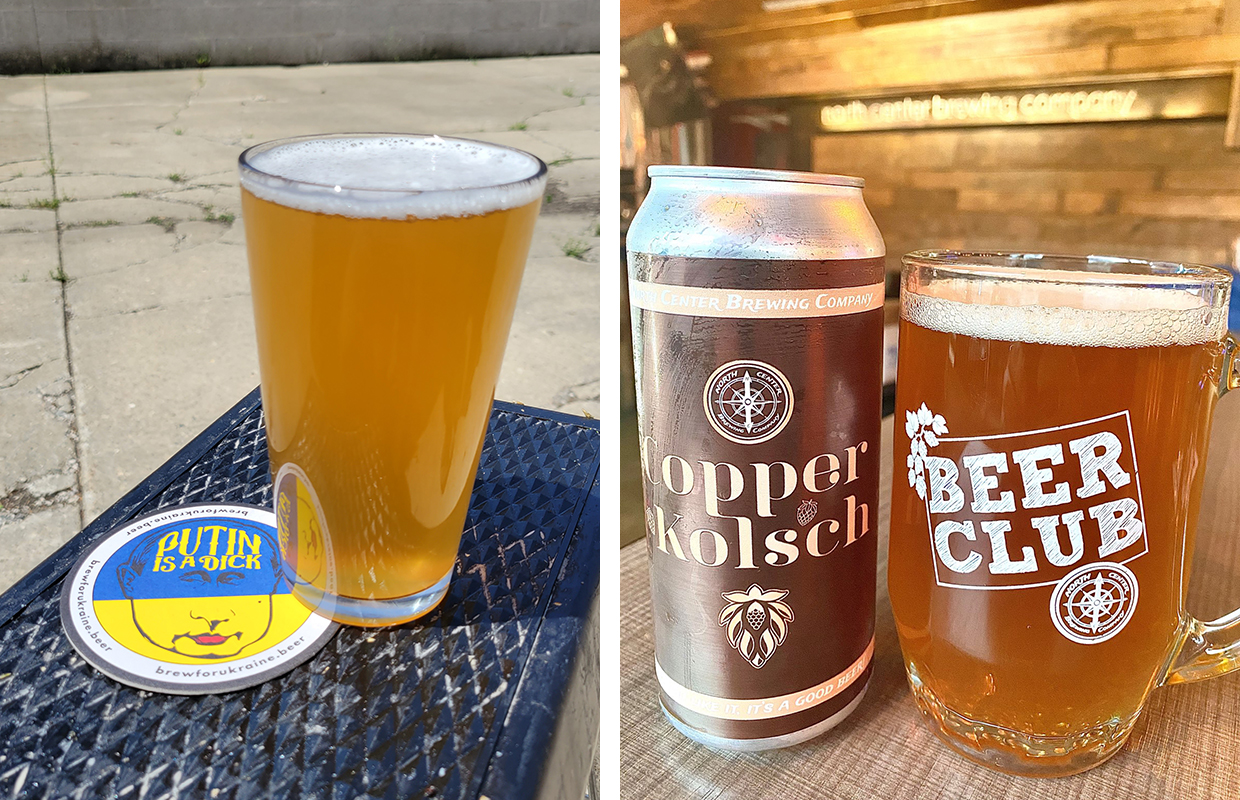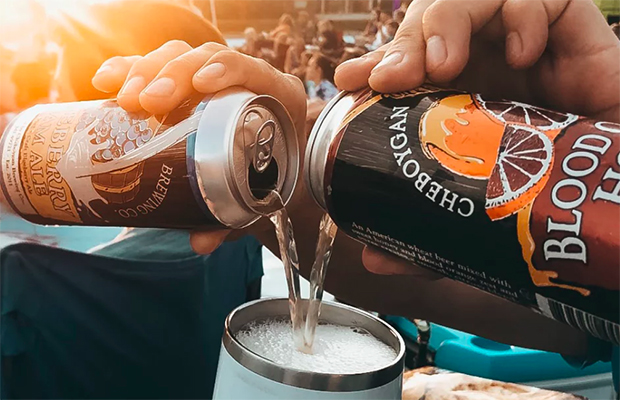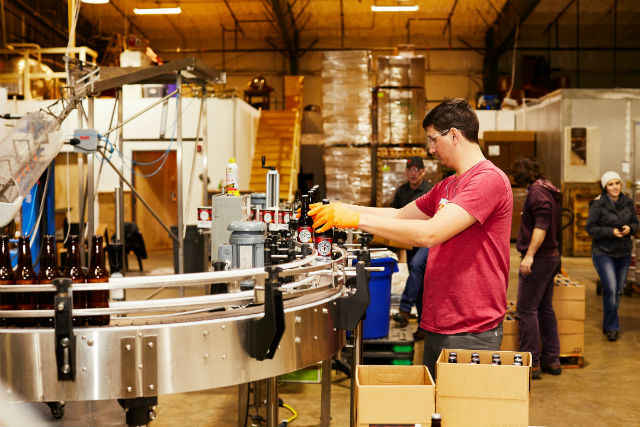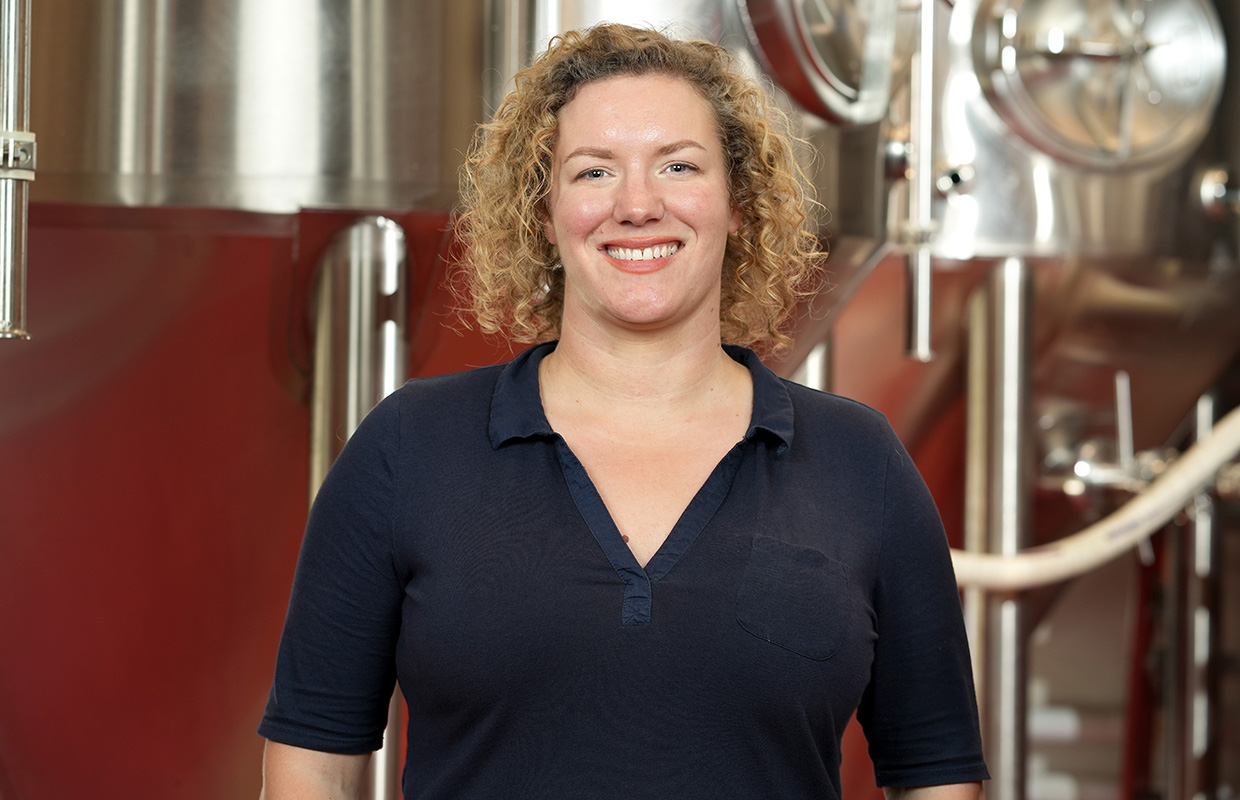
3 Gatos Brewery loves to focus on sourcing locally and founder Linus De Paoli said that having a multitude of proprietary hops raised in the brewery’s home state of Michigan just makes that much easier.
De Paoli shared with Brewer that local hop farms around the Wyoming, Michigan brewery raise types like Paradigm, Emerald Spire, and Triple Pearl. An emerging aroma hop that is less than a decade old is Michigan Copper and more and more breweries are latching on to the hop for big whiffs of hard candy and Hawaiian Punch-like notes.
Eric Plata, the Director of Brewing Operations for Eastern Market/Ferndale Project shared the same thoughts.
“I didn’t expect the cherry hard candy flavors of Copper, although it was a welcomed surprise,” he said. “It didn’t force me to alter anything, but did allow me to consider using a wide variety of other hops to pair with it. Overall, it’s a fun hop to play with that also tends to be very forgiving.”
Dakota Amrit-Wall, Lead Brewer for North Center Brewing in Northville, Michigan breaks the use of Copper down to three categories for best use.
“Sours, Hazies, and Easy Drinkers (either Pilsner or Kolsch),” she said. “Not that it would be limited to these styles of beer. It’s just the flavor and aroma profile I’m looking for tends to play nice with the recipes I create in these styles.“
BREWER: What sets Michigan Copper apart from other similar hops?
De PAOLI: Overall flavor added to beer is really pleasant and total oil content is reasonable. It keeps extraction and yield to decent levels (not much beer loss to trub).
AMRIT-WALL: Copper sets itself solidly in the tropical hop category, [it] has a couple of specific qualities that have carved it out as being able to hold its place in our hop freezer as a regular hop we keep on hand. For one it’s cohumulone percentage content usually clocks in around 36%, similar to the Cascades and Chinooks of the world. Personally I’ve found using these high cohumulone percentage hops coldside and end of boil gives me a much more punchy in your face flavor and aroma which is great for sours and Hazies. The aromas I find are also very unique in relation to other tropical hops, for one as opposed to the mango, melon, and stonefruit bouquet of Idaho 7 or the pineapple/grapefruit bomb of Sultana, Michigan Copper has this very unique cherry, Hibiscus-sort of sweet/floral character to it when used in dry hopping.
BREWER: Are there any technical challenges or tips you have for using Michigan Copper for someone that hasn’t used it yet?
AMRIT-WALL: Stick to the cold side of dry hopping and end of boil additions if you don’t want the big bitterness you’d associate with a Cascade or Chinook. That high cohumulone is great for aroma and flavor extraction when not isomerized (boiled) but can induce some very intense grapefruit-y resiny bitterness if boiled for long periods or used in too high of a quantity, which again isn’t always a bad thing if that’s what you’re going for.
PLATA: Copper is a unique hop, blending aromas of huge citrus and stone fruit with small amounts of herbaceous/pepper notes. The high levels of myrcene and farnesene in conjunction with other key hydrocarbons make this a perfect whirlpool and dry hop addition. But don’t sleep on its kettle applications, it tends to give black cherry and fruit punch flavors.
BREWER: What do you feel are great complementary hops that go with Michigan Copper?
AMRIT-WALL: Hops I like to use … especially in a dry-hop blend, are hops that tend to lean towards more of that sharp citrus or dank resin-y character. So for instance, in our Northern Sky Hazy, I use a lot of MI Chinook and Gemini as well to balance the soft deep sweetness I get from MI Copper. These two flavor profiles in my opinion tend to lend themselves well to creating a dynamic but well rounded aroma profile where no one hop tends to steal the show but instead create this lovely tropical citrus dankness that hits your nose when going in for a sip. Gemini, especially, I use often with Copper.
De PAOLI: Citrusy, piney hops complement the fruity profile of Copper really well. So Citra, Cascade, Centennial, Calistta, etc.
PLATA: I’ve enjoyed using Copper in conjunction with Mosaic and Bergamot hops, which often contributes lime and orange flavors and aromas. The blend gives a complex bouquet of fruit, floral characteristics and bright citrus aromas.
BREWER: What flavors/aromas did you expect … and didn’t expect from Michigan Copper? How did you use them to your advantage or have to alter the idea of the beer?
De PAOLI: Had no expectations, just liked how bright the aromas were on the SMaSH Session IPA.
AMRIT-WALL: I wasn’t expecting a combination of grassy and lemon zest that I found resulted from using it in short boil additions of five or 15 minutes. It’s why I started using it in our Copper Kolsch which I think is an underrated gem this hop shines in. A lemony sort of aroma with fresh cut grass crispness to sort of jazz up an easy drinker and set it aside from some other lighter beers I was seeing out on the market. Now our Copper Kolsch bears the name and as well as the flavor profile as it is a killer representation of the versatility of this hop.
Photos courtesy North Center Brewing & 3 Gatos Brewing






Be the first to comment